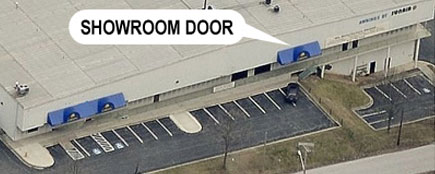There are many manufacturers of mesh screen fabrics on the market. Some fabrics are made of polyester while some are made of fiberglass. Openness factors range from 1 % to 45% as well as complete Black out for privacy. The recommended fabric to use will depend on what type of retractable screen model you are using, your needs or the purpose of the screens. Sunair offers only the best fabrics from all the major manufacturers and offers many choices to suite your needs. Polyester fabrics are less expensive than fiberglass and a bit more economical. Basket weave fabrics vs. twill weaves are also less expensive. If you are adding another roll down screen for solar protection because the bug screen mesh you have is not enough, you should consider a fabric that is a twill weave or "Non-basketweave". A twill weave pattern will help eliminate a "Moiré effect” whereas the view through two basket weave fabrics placed in front of each other then make the view fuzzy. A twill weave fabric is a must if you are adding a retractable mesh screen outside of an already mesh screened enclosure or wall panel. Fiberglass is also more stable than polyester and will show less wrinkles or sag on large screens, especially in hotter climates as the sun hits the fabric. Another important factor when choosing a fabric is the color. The most popular colors are Bronze and Charcoal. These darker colors absorb light and will allow better visibility through the closed fabric mesh screen to the outside. This is important if you desire to have a clean view through the screen fabric while it's lowered.
Lighter colors are more neutral on the house but will offer less solar protection and reflect more light. Lighter colors are therefore harder to see through while the screen is lowered as the fabric mesh is used for diffusing the light. In other words, it is mostly used if you desire a more constant level of lighting throughout the room like in an office or conference room. In such applications you may be interested in a lighter color that evens out the light in the space.
Black out fabrics or room darkening fabrics are also commonly used on interior screens. These fabrics are often used in media rooms and if you want to block the light completely. A double roll interior screen provides two rollers; one will have mesh fabric and the other with either have black out or room darkening fabric.
If a screen will be used only for bug control and not for sun protection and solar glare control, generally a more open 20 – 40% mesh fabric is satisfactory. These fabrics will offer good view and ventilation as well, as they are more open. If you desire to have bug control, some view, and also sun protection, you have to choose a fabric brand and openness factor that offers a bit of all three. The more privacy you are looking for, the more closed mesh is desirable. Consumer trends have been leaning more towards a closed mesh fabric such as 3 % – 5% openness as there is more of an emphasis on energy savings, solar control, and privacy. Often, consumers will also choose different % openness for different sides of the house, depending on how the dwelling, porch, and windows are exposed to the elements. On the East and North facing sides you may be able to use a more open mesh fabric. On the South and West side, you would choose the same color but in a more closed mesh since you will need better glare control, and energy efficiency to keep the space cooler. Rolling zipper screens like the SC4500 screen from Sunair where the fabric is retained in the track, eliminates gaps between the track and fabric which is ideal for creating a bug free instant screened in porch. Lower the screens with the remote and motor and you will be protected. All fabrics in the 1% to 40% range can be used on zipper screens and for bug Control. Phifer makes 45% open mesh fabric named Tuffscreen that keeps even those pesky NO-SEE-UM bugs at bay. However, 45% open mesh fabric is virtually useless for solar and glare control. If your house, window, or Porch faces West and glare and sun control is an issue, it is recommended to stay within the 5% - 6% openness range. Recasens (5000P & 6000P) makes two good polyester mesh fabrics in the 3% – 5.5% range. The Recscreen 6000P is a 3% twill or cross weave and will eliminate the "Moiré effect”. Serge Ferrari makes Bro Soltis Horizon 86 which is a polyester mesh fabric. The Bro Soltis Horizon 86 is based on “Precontraint” technology and very stable for a polyester mesh fabric. The Soltis 86 fabric is 14% open, so a bit more open than average. Mermet Sun Control Textiles makes Natte which is available in 3, 5 and 10% and Satine which is available in 1 and 5% openness. Both fabrics are fiberglass based, so they’re very stable and offer exceptional view. Satine is also a twill weave as well as fiberglass and can be used in front of another mesh screen fabric. The multiple available openness options in the Mermet color range, make it ideal for use when multiple openness factors are required on the different house elevations. Twitchell, another well-known brand makes NANO 95 and Texteline 90 & 95 which are 10% and 5% open. Nano 95 a 5% open fabric is known for its durability, yet it is lighter weight and finer than Texteline 95. All the above-mentioned fabrics are specifically chosen by Sunair as options on our full line of exterior screens for their exceptional quality, performance, and value.










